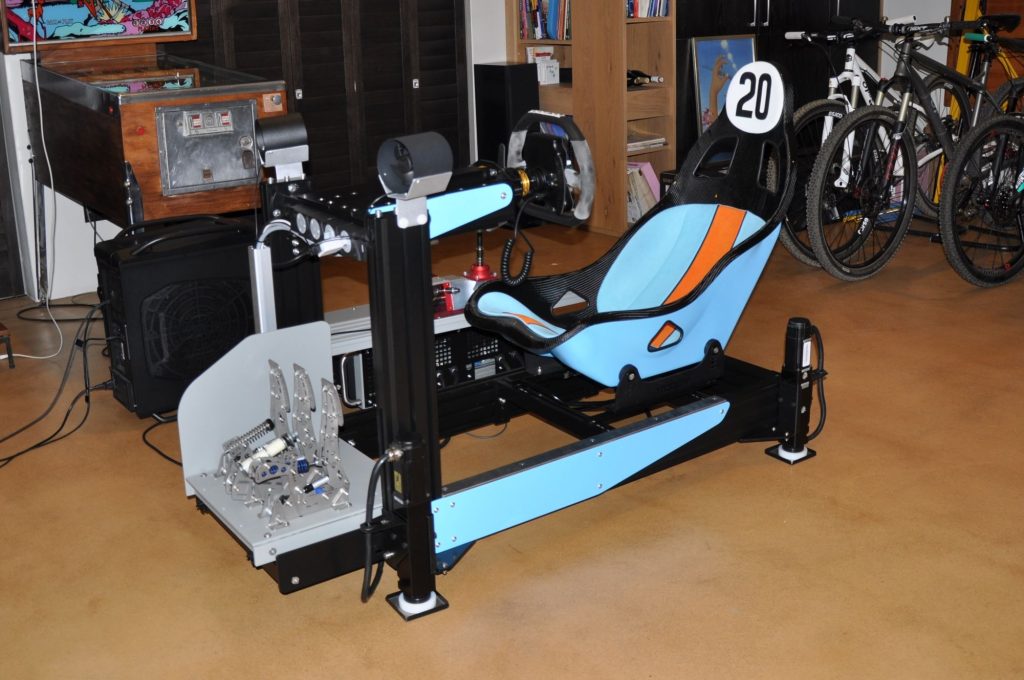
Sim racing, also known as virtual racing or e-sports racing, has taken the tech world by storm in recent years. It offers an immersive experience that combines cutting-edge technology, realistic physics, and competitive multiplayer gameplay. As gamers and racing enthusiasts turn to this virtual alternative, sim racing has become a rapidly growing subculture with a dedicated following.
The Technology Behind Sim Racing
Sim racing rigs consist of various high-tech components that deliver an unparalleled experience. The heart of the setup is a gaming PC or a gaming console, which powers the realistic graphics and physics engines. Many sim racers prefer customizable PCs that can handle demanding racing simulations.
The steering wheel and pedal set are crucial for precise control, mimicking the handling of a real race car. Advanced models offer force feedback, providing realistic resistance to the driver’s inputs. Likewise, a racing seat with built-in vibration motors simulates the feeling of being on a track, enhancing the immersion even further.
Virtual reality (VR) headsets have also become increasingly popular in sim racing. By wearing a VR headset, racers can enter a fully immersive world where they can look around the cockpit and feel a heightened sense of speed. This technology has revolutionized the way sim racers experience the virtual track.
The Appeal of Sim Racing Competitions
Sim racing competitions have become a global phenomenon, attracting both professional racers and amateurs alike. With high stakes and fierce competition, these events provide an adrenaline-pumping experience for participants and spectators alike.
One of the defining features of sim racing competitions is their accessibility. Unlike physical motorsports, sim racing does not require access to a racetrack or a steep financial investment. Through online platforms and leagues, racers from anywhere in the world can compete against each other in a fair and balanced environment.
Furthermore, sim racing allows for a level playing field. While real-world racing may be influenced by factors such as car performance, budget, and team support, sim racing eliminates those variables. It all comes down to driver skill and strategy, making it truly competitive and exciting.
The Impact on the Future of Motorsports
Sim racing’s popularity has caught the attention of major motorsport organizations, including Formula 1 and NASCAR. These organizations have created their own official e-sports divisions, offering sim racers the chance to compete in their virtual counterparts of prestigious races and win substantial prize money.
The marriage between sim racing and real-world motorsports extends beyond e-sports divisions. Professional racing teams are now employing sim racers as part of their driver development programs. Sim racers can benefit from the opportunity to train on virtual tracks and gain exposure to real-world racing teams.
Additionally, sim racing’s influence is not limited to racing enthusiasts. Game developers are constantly pushing the boundaries of simulation technology, delivering increasingly realistic experiences. The advancements made in sim racing can also have implications in fields such as autonomous driving and vehicle dynamics research.
Conclusion
Sim racing has firmly established itself as a prominent force in the tech world. With its cutting-edge technology, accessibility, and intense competition, it has captivated the hearts of racing enthusiasts and gamers alike. As it continues to evolve, sim racing is likely to shape the future of motorsports and influence various technological advancements.


